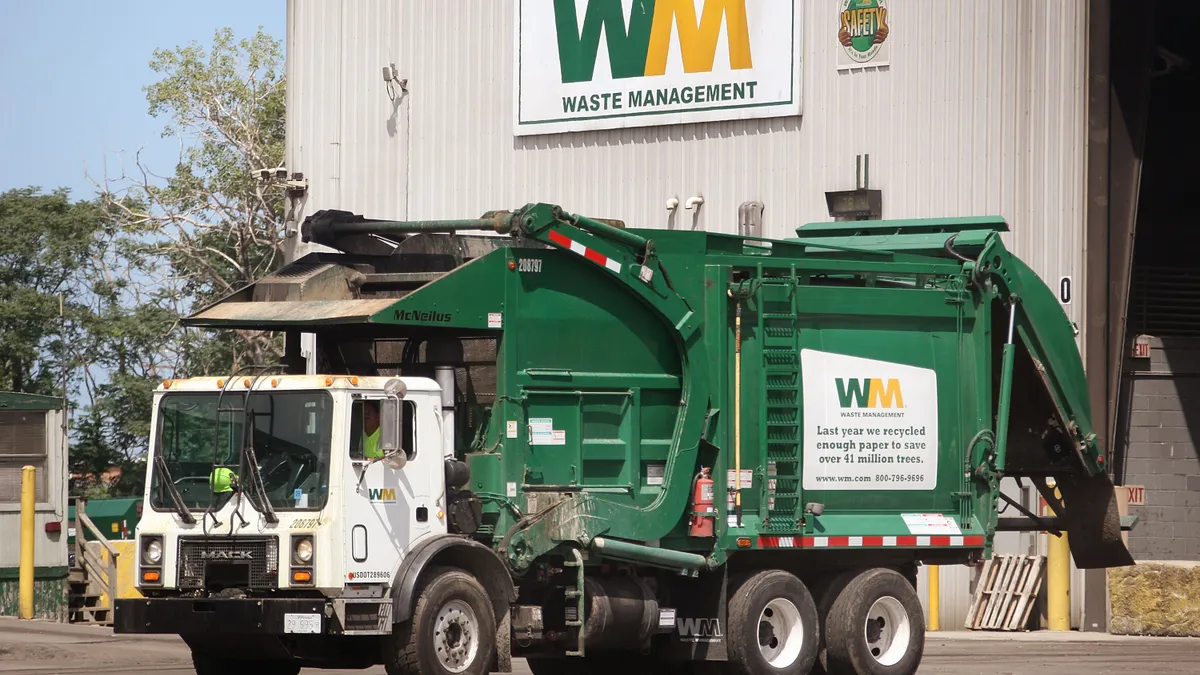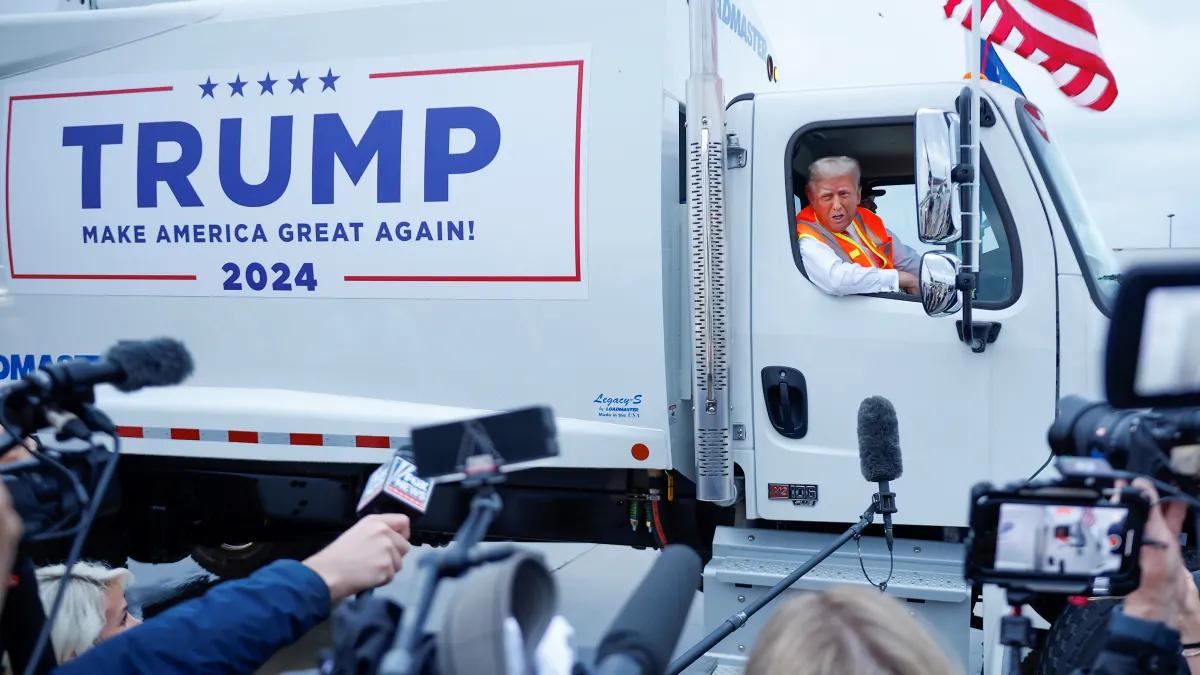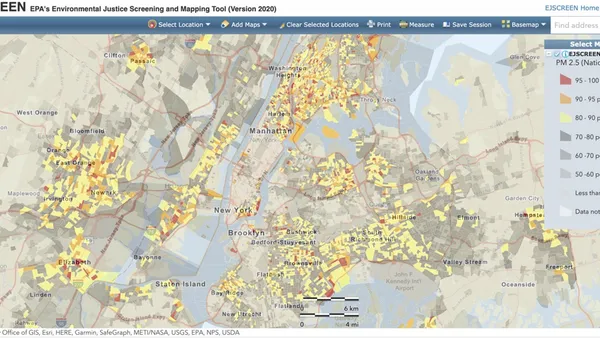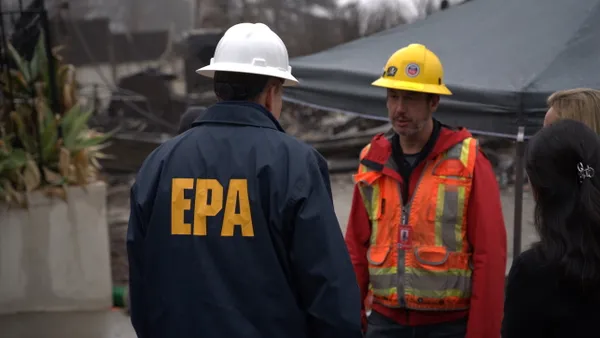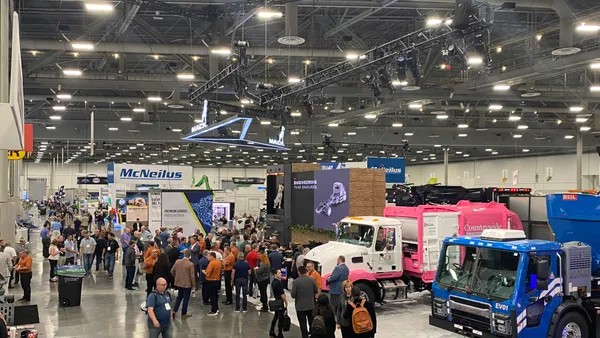WM’s new 2023 sustainability report shows progress on its recently updated climate and sustainability goals.
WM announced a new set of targets in its 2022 report — using 2021 data as a baseline — partly to better reflect more specific near-term emissions goals. The 2023 report shows improvement on its Scope 1 and 2 emissions goals, while WM struggled to improve on its recovered materials goal due to construction at several of its MRFs. It made slight improvements on social goals like increasing employee diversity.
Climate targets
Goal: Reduce absolute Scope 1 and Scope 2 GHG emissions 42% by 2031
Update: Reduced direct emissions by 10% in 2022, mainly by decreasing landfill and fleet emissions. The company reported Scope 1 emissions of 15.32 MT CO2e and Scope 2 emissions of 138,743.
WM’s goal is in line with the Science Based Targets initiative, which calls for targets to align with the Paris Agreement’s 1.5 degree Celsius global warming limit. WM says it is the first in industry to have its target aligned with this requirement. Republic was the first to have its target approved by SBTi, but under SBTi’s prior 2 degree framework. WM moved the target year from 2032 to 2031.
About 90% of WM’s greenhouse gas emissions footprint comes from Scope 1 emissions, mainly from landfills and fuel for fleets. WM reported decreasing landfill emissions by 10% in 2022 by upgrading some of its gas collection and control systems and by capping or covering more acres of landfills, it said.
It reduced fleet emissions by 5% by increasing the use of renewable natural gas and upgrading to more efficient vehicles and trucks that “run on alternative fuels,” instead of diesel, it said.
WM also has a goal to have a “beneficial use” for 65% of its captured landfill gas by 2026. In 2022, WM used 45% for “the beneficial use of generating renewable energy,” including to use for its compressed natural gas fleet.
WM says 17 of the 130 landfill gas-to-energy facilities it “operates or hosts” produce RNG. WM has plans to invest over $1 billion to build about 20 new renewable natural gas facilities by 2026. WM estimates the results will help it capture eight times the landfill gas compared to its 2021 baseline.
WM also reported a decrease in Scope 3 emissions, such as from construction and capital investments, which make up about 9% of its footprint.
Goal: Increase “recovery of materials” by 60% to 25M tons by 2030, with interim goal of a 25% increase by 2025
Update: Recovered 14.83M tons of materials, a 3.3% decrease over its 2021 baseline of 15.34M tons.
WM mainly attributes the lower recovery to a temporary shutdown of four MRFs for automation upgrades, it said. WM also opened a new C&D recycling facility in Miami-Dade County in Florida, which it says will help increase capacity.
WM’s material recovery metric is based on measuring the amount of recovered paper, plastic, glass, mixed organics, metal and “other” materials, according to the report. WM collected less of each category in 2022 compared to the 2021 baseline, with the exception of metal and materials in the “other” category, which each saw slight increases. That category includes fly ash, construction and demolition wood, e-waste and other specialty materials. WM also reported a diversion rate at company facilities of 26%, down slightly from 27% the previous year.
By 2026, WM has said it plans to expand its recycling footprint into at least eight new locations through a series of long-term MRF investments. WM also sees plastics recycling investments as having a long-term payoff on its sustainability goals. In 2022, WM acquired a controlling stake in plastic film recycler Natura PCR.
Social targets
- Goal: Reduce Total Recordable Incident Rate by 3% annually, with a target of 2.0 incidents per 100 employees by 2030 and a “continued focus on prevention of serious injuries.” WM reported a TRIR of 3.02, a slight increase from 2022. WM plans to reduce the rate by adding more automation in facilities and on trucks. By 2026, WM has said it plans to complete 35 MRF automation projects.
- Goal: Invest 2% of net income “to targeted social impact programs, positively impacting 10 million people in our communities by 2030.” WM calculated that it impacted 302,998 people, supported over 775 nonprofit organizations in North America and made $15.9 million in charitable contributions. WM said it spent more in 2022 on purchasing from diverse suppliers, such as businesses “owned by women, minorities and veterans.”
- Goal: Increase representation of women “from front line to leadership roles” to 25% by 2030 and “increase representation of racial/ethnic minority employees at manager and above to 30% by 2030.” WM’s female representation was 19.2% overall, which was the same as in 2022. It increased its minority representation in management roles or above to 22.9%. WM plans to engage with military veterans and “continue engagement with diverse populations in our workforce” to bring those numbers up further. WM will also continue frontline and leadership development programs.



